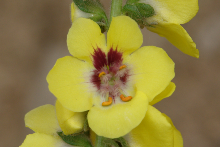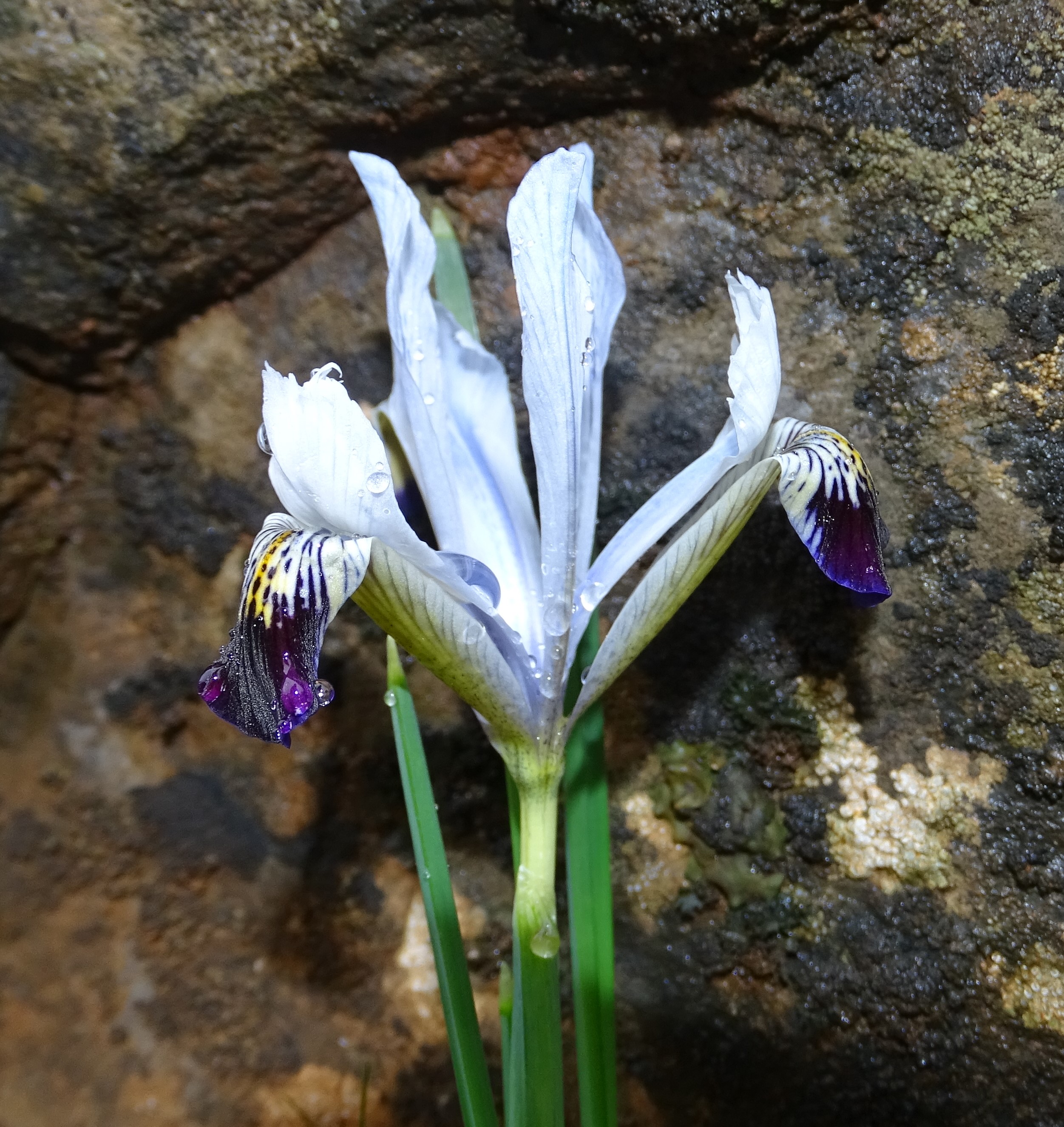HIGHLIGHTS
Please make an appointment to visit our herbarium. You can request an appointment here.
Please don't forget to read the researcher policy, before your visit. For visiting hours click here.
NGBB Herbarium was established in 2004 in a small two-room building next to the office building in order to document and record the plants grown at Nezahat Gökyiğit Botanik Bahçesi. In March 2010, it was registered at Index Herbariorum and received the “NGBB” code. In the following years, the scope of the herbarium expanded with the addition of specimens collected during our research expeditions to improve our collections. NGBB Herbarium contains approximately 16,000 plant specimens belonging to Collections of Angiosperms, Gymnosperms, Ferns, Lichens, Cultivated Plants, Carpological and Spirit Specimens. As NGBB Herbarium, we started to establish a virtual herbarium in 2020, within the scope of the Global Strategy for Plant Conservation (2011 – 2020) Objective I: “Plant diversity is well understood, documented and recognized”. As of 2022, our virtual herbarium has been put to service by transferring the data and images of the herbarium specimens in the NGBB Herbarium to the web environment.
Use Policies
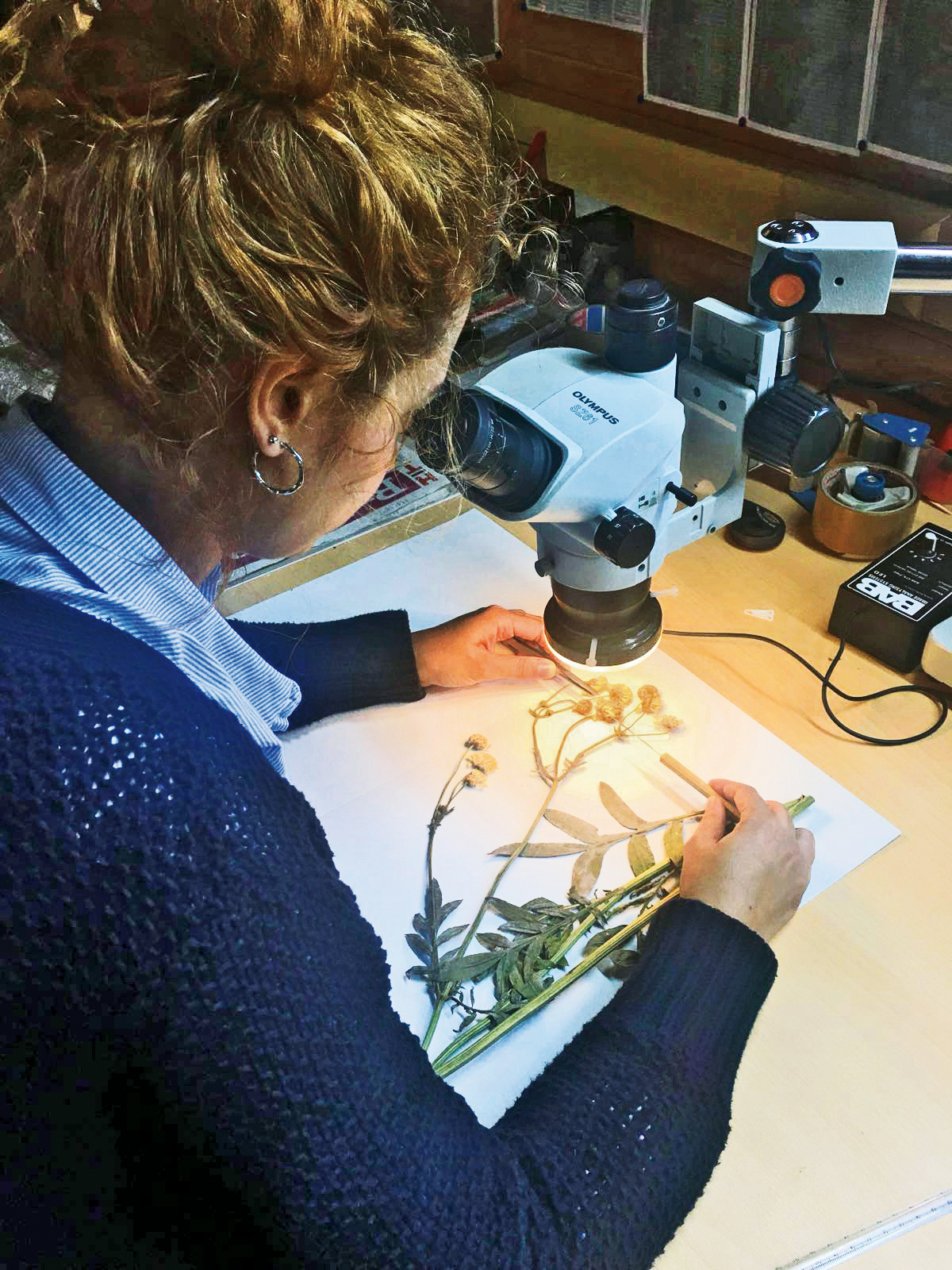 |
Specimen Aquisition
Virtual Herbarium 
About
As NGBB Herbarium, we started to establish a virtual herbarium in 2020, within the scope of the Global Strategy for Plant Conservation (2011 – 2020) Objective I: “Plant diversity is well understood, documented and recognized”. As of 2022, our virtual herbarium has been put to service by transferring the data and images of the herbarium specimens in the NGBB Herbarium to the web environment.
Equipment and Process
Nezahat Gökyiğit Botanik Bahçesi (NGBB) Virtual Herbarium - Equipment and ProcessCamera and Lens
- Sony A7R IV (ILCE-7RM4) full frame mirrorless camera, 61 MP image sensor, 19008 × 12672 resolution, 567 points auto focus, 8 - 16 bit
- Sony SEL50M28 Alfa, 35 mm full frame F 2.8 macro lens
- Pelsan 36 W 220-240 V, Led 6500 k, 60 cm x 60 cm, 3 panels
- Pelsan 17 W 220-240 V, Led 6500 k, 30 cm x 30 cm, 2 panels
- iMac (Retina 5K, 27-inch, 2019)
- Processor: 3,7 GHz, Intel Core i5 6 core
- Memory: 16 GB 2667 MHz DDR4
- Graphics: Radeon Pro 580X 8 GB
- Storage: 1 TB
- Adobe Photoshop 2022
- Sony Imaging Edge Desktop Ver. 1.0.02.03270
- Zoomable Photoshop Plugin
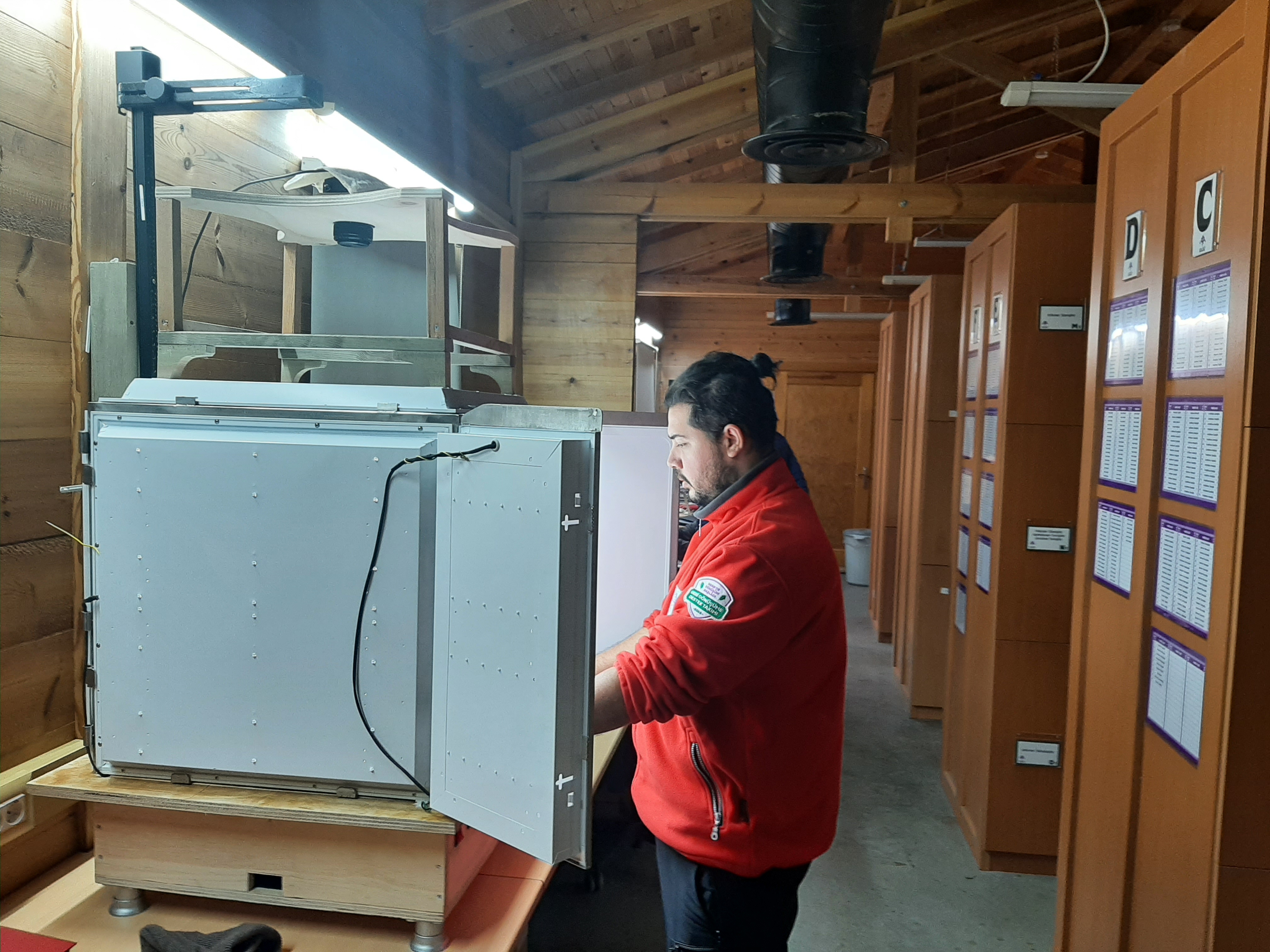
Herbarium sheet is placed into the imaging cabinet, the vacuum and lights are turned on.
Focusing of the image is adjusted using the software and 16 frames are captured.
A high resolution image of the specimen is captured. Color and exposure are adjusted.
Image is saved in TIFF format without compressing (~1.45 GB) and the image file is named after the barcode number of the specimen.
Image size is reduced (~40.5 MB) via Zoomable Plugin on Photosop and uploaded to Virtual Herbarium.
Citation Policy
Citing a Physical Herbarium Specimen:When citing NGBB Herbarium specimens, correctly write down the barcode number of the specimen registered to NGBB, along with the abbreviation NGBB registered in the International Herbariums Index.
Example:
Type: A. Güner 16664, F. Güneş, T. Ok, F.I. Güner (holo.: NGBB 7966)
Type specimen: A. Güner 16664, F. Güneş, T. Ok, F.I. Güner (holotype: NGBB 7966)
A. Kandemir 10880 (NGBB 5771)
• “... a specimen of Pinus sylvestris L. var. elicinii Kandemir & Mataracı from the herbarium of Nezahat Gökyiğit Botanik Bahçesi (NGBB) (NGBB 5771) ...”
Citing Digital Specimen:
NGBB Herbarium is committed to expanding access to information for researchers and the public. For this reason, we support the use of the data of the digital specimens in the Virtual Herbarium in academic and general publications without any charge. However, the copyrights of the data we make available in the NGBB Virtual Herbarium belong to the NGBB Herbarium. When these data are used in publications, no changes should be made to them and should be cited in accordance with the Virtual Herbarium Citation Policy. If there is no digital record of the specimen you are looking for, please create a loan request by following the steps stated in the Loan Policy We would appreciate if you could send us a copy of the publications based upon our collections or send a notification of such publications.
Loan Policy
Please read the NGBB Loan Policy and ensure that you meet the specified criteria before creating a loan request.To borrow a specimen from our herbarium, contact our herbarium curator Burçin Çıngay via e-mail at burcincingay@ngbb.org.tr and apply for a loan.
Please include the following information in your application:
● Loan type: Physical specimen or digital specimen
o Physical Specimen: Physical herbarium specimens are only loaned to approved institutions.
o Digital Specimen: You can create a request for a specimen that has not yet been added to the virtual herbarium, or you can request high resolution copies of the specimens in the virtual herbarium.
● Give information about the borrower and the institution.
Indicate the name of the researcher who will work on the specimens and their position in the institution (employee, lecturer, student, visitor). If the researcher is a graduate student, the name of the supervisor should also be mentioned.
● Indicate the purpose for using NGBB specimens by adding a short summary of your research.
● Include an alphabetical list of binomial names (including valid names and synonyms) with the authors of the requested taxa.
● Specify your preferred geographic region, if any.
The loan period is maximum one year for herbarium specimens and 6 months for type specimens. To extend this period, you can request an extension by e-mail (burcincingay@ngbb.org.tr) to our herbarium curator Burçin Çıngay.
When the borrowed specimens reach your institution, check the package contents, whether the specimens are compatible with the given list, and the relevant loan terms. Send the Loan Information Form, which is sent along with the borrowed specimens, to the NGBB Herbarium signing and specifying the delivery date.
How to Cite this Site
- NGBB Virtual Herbarium should be cited as:
- For reference to a specimen cite the link to the specimen detail page, as shown below:
NGBB (2022). Digital specimen images at the NGBB Herbarium. Data provider: Nezahat Gökyiğit Botanik Bahçesi. https://herbaryum.ngbb.org.tr
NGBB (2022). Digital specimen images at the NGBB Herbarium. Data provider: Nezahat Gökyiğit Botanik Bahçesi. https://herbaryum.ngbb.org.tr/?barcode=NGBB009656
Copyright
Image parts provided by this server with the given resolution have been released under the Creative Commons cc by-sa 3.0 (generic) licence [http://creativecommons.org/licenses/by-sa/3.0/de/]. Please credit images to NGBB following our Citation Policy.If you would like to use images in a different format or resolution not provided by this image server, please contact us bilim@ngbb.org.tr for additional information.
The textual data on this site are released under the Creative Commons CC0 licence [http://creativecommons.org/publicdomain/zero/1.0/].
Please note that, in any case, the copyright for the images stays with us. The images may not be passed on to any third party without our written consent and due mention of the copyright restrictions, and may not be used for commercial or non-scientific purposes. Reproduction in scientific publications is authorised on the condition that the source and the copyright are fully acknowledged:
© Nezahat Gökyiğit Botanik Bahçesi Herbarium.
ANG Foundation Publications
Implementation of basic issues such as the creation of plant collections, conservation of species, educational activities, horticultural practices, which are among the defining activities of botanic gardens, inevitably brings with it the work of publishing. Publishing activity in the botanic garden serves to fulfill the mission, as well as emerges as new studies and publications.
Parallel to the growth and development of NGBB, our activities in this field continue to diversify in terms of both audience and products.
- Bağbahçe Dergisi
- Bitkileri Tanıyalım
- Odak Noktası: Bitki Biyoçeşitliliği
- İstanbul'da Bahçe ve Çiçek
- Doğa ve İnsan Sevdam
- Yaşlı ve Anıt Ağaçlar
- Nezahat Gökyiğit Botanik Bahçesi
- Nezahat Gökyiğit Botanik Bahçesi Gezi Rehberi
- Nezahat Gökyiğit Botanik Bahçesi Adalar
- Nezahat Gökyiğit Botanik Bahçesi Koleksiyonlar
- Türkiye’nin Biyolojik Zenginliği ve Koruması
- Resimli Türkiye Florası 1. Cilt
- Resimli Türkiye Florası 2. Cilt
- Türkiye Bitkileri Listesi (Damarlı Bitkiler)
- Türkiye Bitkileri Listesi (Karayosunları)
- Türkiye Bitkileri Listesi (Suyosunları)
- Türkiye Likenleri Listesi
- Türkiye Mantarları Listesi
- Türkiye Arke ve Bakterileri Listesi
- Doğanın Detaylarını Görmek – Bilimsel ve Teknik Anlatımla Bitki Resimleri
- Uygulamalı Sistematik Revizyon veya Monografi Hazırlama Kılavuzu (e-Kitap)
Other Publications
- Festuca albomontana (Poaceae), a new chasmophytic fescue from the Western Taurus Mountains (Antalya, Turkey)
- Isolation and characterization of the most abundant rhizobacterial species associated with Vuralia turcica (Fabaceae: Papilionoideae)
- Verbascum × malkaraense (Scrophulariaceae), a New Verbascum L. Hybrid from Tekirdağ, Turkey
- Evaluation of Ornamental Plant Potential of the Turkish endemic plant Cephalaria tuteliana S.Kuş & Göktürk
- Türkiye’de Yayılış Gösteren Hasayakotu (Carex melanorrhyncha Nelmes) ve Yünlüsaparna (Carex eriocarpa Hausskn. & Kük.) Türlerinin IUCN Tehlike Kategorilerinin Yeniden Değerlendirilmesi
- Verbascum L. (Sığırkuyruğu) Cinsinde Eksik Olan Bilimsel Türkçe Adlar İçin Ad Önerisi
- Nezahat Gökyiğit Botanik Bahçesi’nin (İstanbul) Bazı Kurak-Çorak Alan Bitkileri Üzerinde Palinolojik Araştırmalar
- Anatomical Studies on Verbascum bugulifolium Lam. (Riva Mullein)
- FYE App (Flora Yayılış Editörü Uygulaması)
- A Reassessment of IUCN Threat Category of Verbascum bugulifolium Lam. (Riva Mullein)
- A new stonewort record for Turkey: Chara polyacantha A. Braun
- Türkiye'de Yayılış Gösteren Carex L. (Ayakotu) Taksonlarının Tür Epiteti Etimolojisi
- Seed germination studies of Cephalaria gigantea (Ledeb.) Bobrov with ornamental plant potentials
- The morphologic and phenological characteristics of some Cephalaria Schrad. ex Roem. & Schult. taxon naturally found in Turkey
- Checklist of grasses (Poaceae Barn.) in Istanbul
- Verbascum faik-karaveliogullarii (Scrophulariaceae), a new species from southeastern Anatolia, Turkey
- The Morphologic and Phenological Characteristics of some Carnation (Dianthus L.) Taxons Naturally Found in Turkey
- Determination of soil nutrient status in Vuralia turcica populations growing at different locations in the Central Anatolia Region of Turkey
- A new species of Cymbocarpum (Apiaceae) from the Central Anatolia Region of Turkey and its phylogenetic position within Tordylieae
- Flora of Eskişehir Yazılıkaya valley and its environs
- Achieving GSPC Objective 1: Herbarium NGBB of the Nezahat Gökyiğit Botanik Bahçesi (İstanbul, Türkiye)
- Nezahat Gökyiğit Botanik Bahçesi’de (İstanbul) Doğal Olarak Yetişen Buğdaygil (Poaceae Barn.) Familyası Üzerine Floristik Araştırmalar
- A new species of Verbascum, V. nihatgoekyigitii (Scrophulariaceae), from southeastern Anatolia, Turkey
- Stem Anatomy of two bulbous Poa species (Poaceae) from the Mediterranean region of Turkey
- A new species of Bellardiochloa, B. Doganiana (Poaceae), from the Taurus Mountains of Turkey
- Agropyron pinifolium Nevski (Poaceae): a new species record for the flora of Turkey
- Tekirdağ İlinde Doğal Olarak Yetişen Buğdaygiller (Poaceae Barn.) Familyası Üzerine Floristik
- Some notes on Aegilops uniaristata Vis. (Poaceae) in Turkey
- Süs Bitkisi Olarak Kullanılan Buğdaygiller
- Ex-situ Conservation of Thermopsis turcica Kit Tan, Vural & Küçüködük in Nezahat Gökyiğit Botanik Bahçesi, Turkey
- Checklist of Grasses in Istanbul
- Tekirdağ İlimizin Salep Çeşitliliği
- Geophytes of Yazılıkaya (Han-Eskişehir)
- Nezahat Gökyiğit Botanik Bahçesi Herbaryum'undaki (NGBB) P.H.Davis Örnekleri
- Lepyrodiclis alinihatii (Caryophyllaceae), a new species from Turkey
- Resimli Türkiye Florası (The Illustrated Flora of Turkey) Asphodelus L. / Çirişağusu Vebsürümü (2020)
- Uygulamalı Sistematik Revizyon veya Monografi Hazırlama Kılavuzu
- Botanik Bahçesi Nedir?
- Isolation and characterization of the most abundant rhizobacterial species associated with Vuralia turcica (Fabaceae: Papilionoideae)
- Rivasığırkuyruğu (Verbascum bugulifolium Lam.) Türünün Toprak ve İklim Özelliklerinin Değerlendirilmesi
IUCN SSC Turkey Plant Red List Project
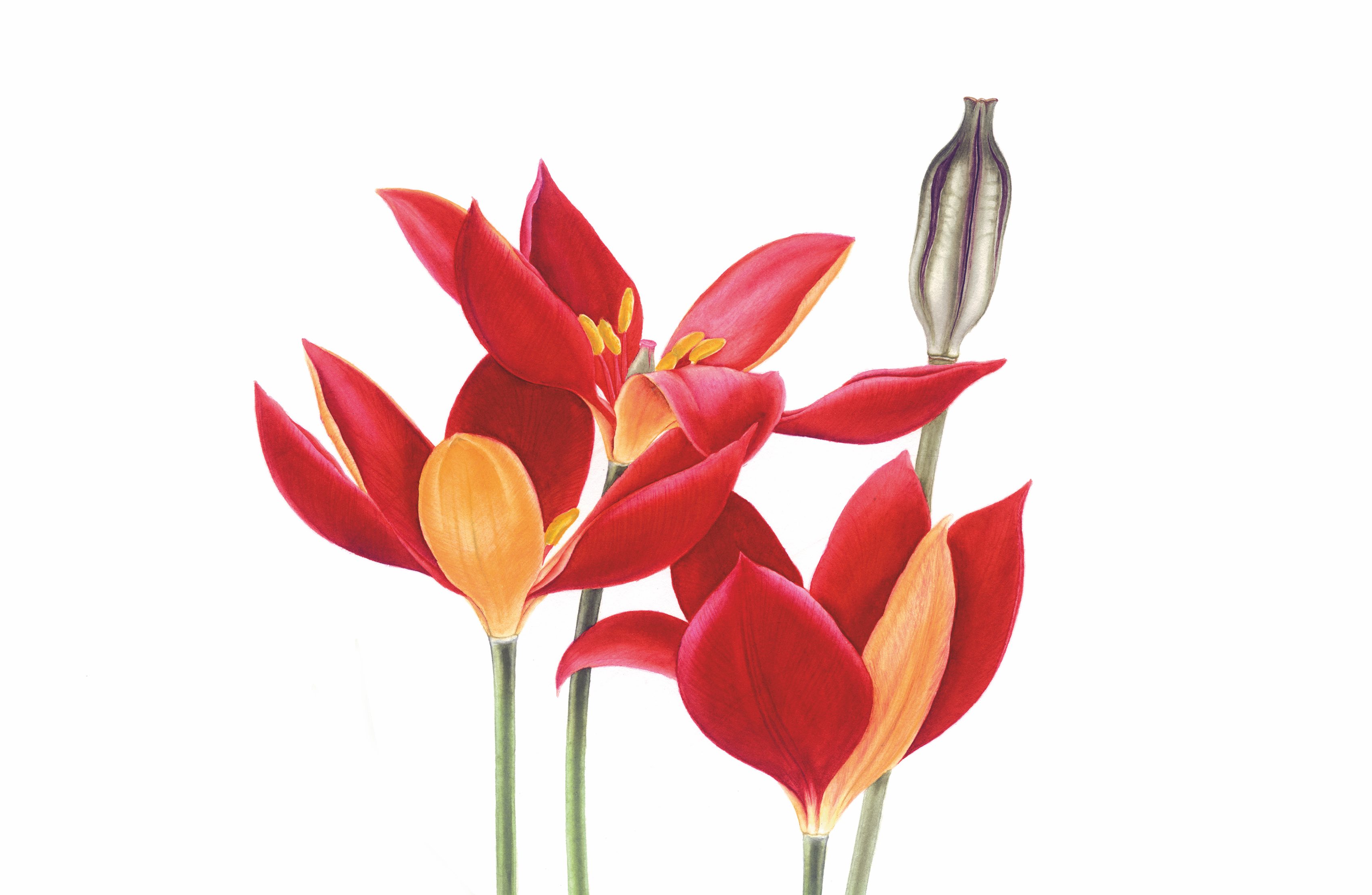
Red List of Vascular Plants of Turkey, were published twice before; the first in 1989 and the second in 2000. After the second Red List was published in 2000, some changes were made by IUCN in 2001, 2003, 2014, 2016 in the evaluation criteria used in the red list published that year. Therefore, a need has arisen for the revision of the Red List of Vascular Plants of our country, in accordance with international standards.
With the rapid increase in floristic studies in our country, around 1.500 new species/taxa have been published from Turkey over the years. As a result of the increasing floristic studies, new additions have been made to the distribution areas of some taxa known until that time, in other words, the distribution information about our plants has increased.
In addition, the fact that many young botanists have been trained in recent years, working on certain plant species, making revisions and contributing to the Illustrated Flora of Turkey Project is another advantage for implementing such projects.
The most important aim of the project is to prepare the evaluations in a way that will be accepted by the IUCN in order to ensure that the evaluations made within the scope of this project are included in the IUCN Red List.
Project Owners: Ali Nihat Gökyiğit (ANG) Foundation ve Flora Research Association
Project Coordinators: Prof. Dr. Tuna Ekim; Prof. Dr. Hayri Duman (National); Prof. Dr. Reşit Akçakaya (International).
Executive Committee (alphabetical order): Prof. Dr. Ahmet Aksoy, Prof. Dr. Zeki Aytaç, Prof. Dr. Evren Cabi, Prof. Dr. Kamil Coşkunçelebi, Prof.Dr. Kuddisi Ertuğrul, Prof. Dr. Ergin Hamzaoğlu, Prof. Dr. Birol Mutlu, Prof. Dr. Neriman Özhatay, Doç Dr. Serdar Şenol, Prof. Dr. Mecit Vural, Umut Adıgüzel (General Directorate of Nature Conservation and National Parks representative), Burçin Çıngay (NGBB representative), Dr. Özge Balkız (Nature Conservation Centre), Prof. Dr. Can Bilgin (advisor)
Illustrated Flora of Turkey

Flora of Turkey, which was written twice before, in Latin and English, is of utmost importance in that it is written in Turkish this time and includes illustration of all plants. This project is under the auspices of the Presidency of the Republic of Turkey. In this project, we are working as a large team with scientists and botanical illustrators from all over Turkey. This team is growing day by day and new illustrators and scientists are joining us. The creation of such an incredible work is thanks to the wholehearted effort and contribution of everyone involved. The Illustrated Flora of Turkey Project is a project implemented in collaboration with the Flora Research Association, Nezahat Gökyiğit Botanik Bahçesi and ANG Foundation.
Due to its geographical location, Turkey has an incredible variety of vegetation. According to the records so far, approximately 11,000 species of plants exist within the borders of Turkey. About 3000 of them are endemic and are unique to these lands. For this reason, updating and rewriting the Flora of Turkey has become an important need. With this project, which will be written in our native language, we strive to reach a wider audience. By writing the Illustrated Flora of Turkey, we intend to introduce familiarize our people with our country's plants and raise awareness on their protection and their wise use in sustainable development.
This project will consist of 30 volumes, of which first three are completed. And with this project, it is planned to make 2000 watercolor plant illustrations and 9000 plant illustrations in ink. The preparations for the other volumes of this work are continuing rapidly. Click here to access the web version of this great project, which has also been transferred to the electronic environment.
Lead Editor
Adil Güner 
Science Editors
Ali Kandemir  , Yusuf Menemen
, Yusuf Menemen  , Hasan Yıldırım
, Hasan Yıldırım  , Serdar Aslan
, Serdar Aslan  ,
,
Aşkın Öykü Çimen 
Art Editors
Gülnur Ekşi  , Işık Güner
, Işık Güner  , Fatma Şen
, Fatma Şen 
Yayınlar
News & Events
Gymnosperm Collection
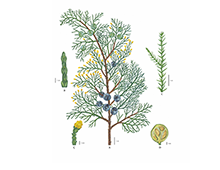
In our gymnosperm collection, which is a group of plants consisting entirely of trees and shrubs, we have specimens belonging to 71 taxa.
30 of these taxa were illustrated by botanical illustrators using specimens in our collection as a part of Illustrated Flora of Turkey Volume 2.
Click here for the list of the NGBB specimens of gymnosperms and their illustrations published in Illustrated Flora of Turkey Volume 2.
Angiosperm Collection

Our collection consists 15.471 specimens representing 685 genera belonging to 132 families, which represent an important part of Turkey's plant biodiversity. The oldest herbarium specimens belonging to this group found in our herbarium were specimens of plants collected from Turkey, in the late 1930s by P.H. Davis.
Our collection mainly consists of specimens collected from Turkey and neighbouring countries. Iridaceae, Lamiaceae, Scrophulariaceae, Asparagaceae, Cyperaceae, Colchicaceae, Fagaceae constitute the richest families in our collection in terms of specimen diversity and number.
The major collectors contributing to our collection are Adil Güner, Füsun Ertuğ, Peter H. Davis, Rahim Anşin and Rodney M. Burton.
Fern Collection
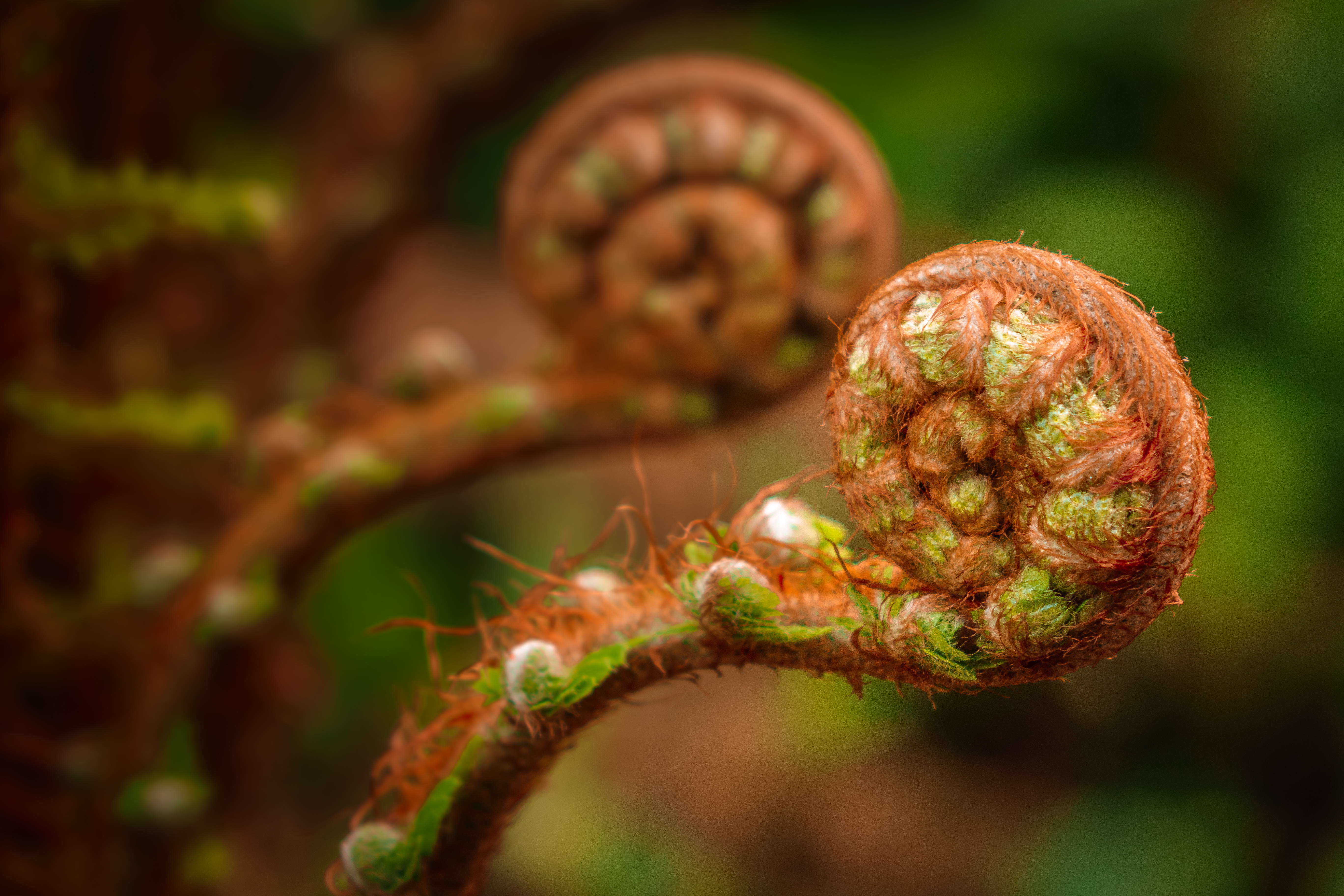
Club mosses and ferns are the most primitive ones among vascular plant groups. In Turkey, there are about 107 club mosses and ferns belonging to 20 families. Our fern collection consists of approximately 270 fern specimens.
Lichen Collection
Our Lichen Collection consists of 93 lichen specimens growing on tree barks, soil, rocks, decayed plant remains and woods found at 49 spots on the eight islands that make up the Nezahat Gökyiğit Botanik Bahçesi, which were collected and identified by Volker John, in 2015.
Carpological Collection
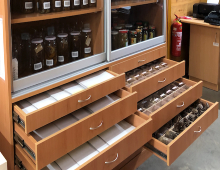
Our Carpological Collection, established in 2020, includes mainly fruit and seed specimens, and specimens consisting of large plant parts that are too large for herbarium sheets.
In addition to carpological specimens, we have a small Spirit Collection, which consists of plant specimens preserved in fluid, stored in glass jars.
Cultivated Plants Collection
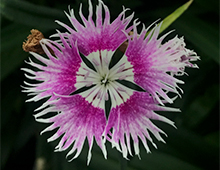
Cultivated plant specimens are herbarium specimens taken from plants of known origin, grown in a botanic garden, nursery or park, as opposed to specimens collected directly from the wild. Specimens made from plants grown at Nezahat Gökyiğit Botanik Bahçesi are kept in our herbarium in order to document the plants exhibited in the living collection.
In our herbarium, there are approximately 1000 cultivated plant specimens, majority of which taken from plants grown in our garden, belonging to various plant groups that are not native to Turkey.
About
NGBB Herbarium was established in 2004 in a small two-room building next to the office building in order to document and record the plants grown at Nezahat Gökyiğit Botanik Bahçesi. In March 2010, it was registered at Index Herbariorum and received the "NGBB" code. In the following years, the scope of the herbarium expanded with the addition of specimens collected during our research expeditions to improve our collections.
In 2009, Dr. Füsun Ertuğ contributed to the development of the collection by donating approximately 1500 ethnobotanical specimens belonging to the Bodrum Beneficial Plants Research Herbarium. In 2014, Edinburgh Royal Botanik Bahçesi Herbarium presented to our herbarium a distinguished collection of specimens collected from Turkey by P. H. Davis, the author of "Flora of Turkey".
Since 2012, the NGBB Herbarium has become a central hub for researchers and scientific botanical illustrators taking part in the Illustrated Flora of Turkey Project.
 |  | 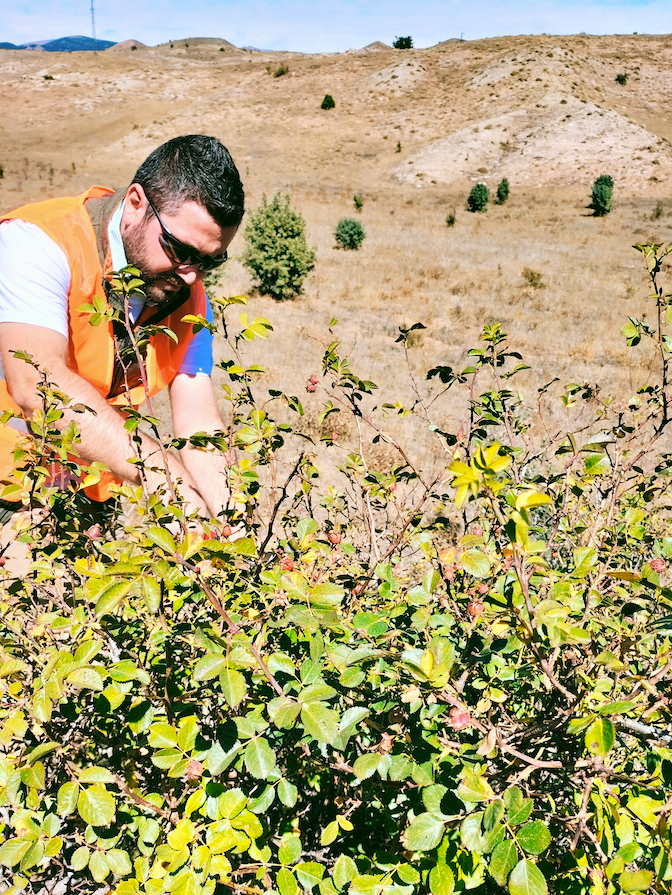 |
In 2015, our Lichen Collection was included in the herbarium by adding 93 lichen specimens growing on tree barks, soil, rocks, decayed plant remains and woods found at 49 spots on the eight islands that make up the Nezahat Gökyiğit Botanik Bahçesi, which were collected and identified by Volker John.
As the NGBB Herbarium gradually grew and its scope expanded over time, the amount of incoming plant specimens increased rapidly. The herbarium was getting tight. In response, in 2015, we built a new herbarium building in the area where the old conservatory was located on the Central Island. We have provided suitable conditions for the dried plant specimens to be preserved in a healthier environment. Our herbarium, which we have equipped with a special ventilation system, now performs its mission and functions better.
In 2020, in addition to dried plant specimens, the Carpology Collection, which includes various plant parts, mainly fruit and seed specimens, and the Anatomy Collection, which includes plant specimens preserved in solutions in glass jars were incorporated into our herbarium, thus our collections took their present form.
There are approximately 16,000 plant specimens in the NGBB Herbarium. Plant specimens in herbarium cabinets are grouped into ferns, gymnosperms, angiosperms; families within each group, genera within the family, species within the genus and subspecies taxonomic levels are arranged in alphabetical order. Lists showing cabinet and shelf numbers of specimens by families and genera are hung on the herbarium cabinets. There is also a user guide at the entrance of the herbarium to help researchers to navigate the collections.
Herbaria are valued not only by the number of specimens they contain, but also by the type specimens they have. The first herbarium specimen or specimens on which the properties of a newly discovered plant species were investigated are called “type specimens” and are scientifically valuable comparative materials.
According to our records, the number of type specimens preserved in NGBB is 134. Click here to access the list of registered type specimens in the NGBB Herbarium.
 |
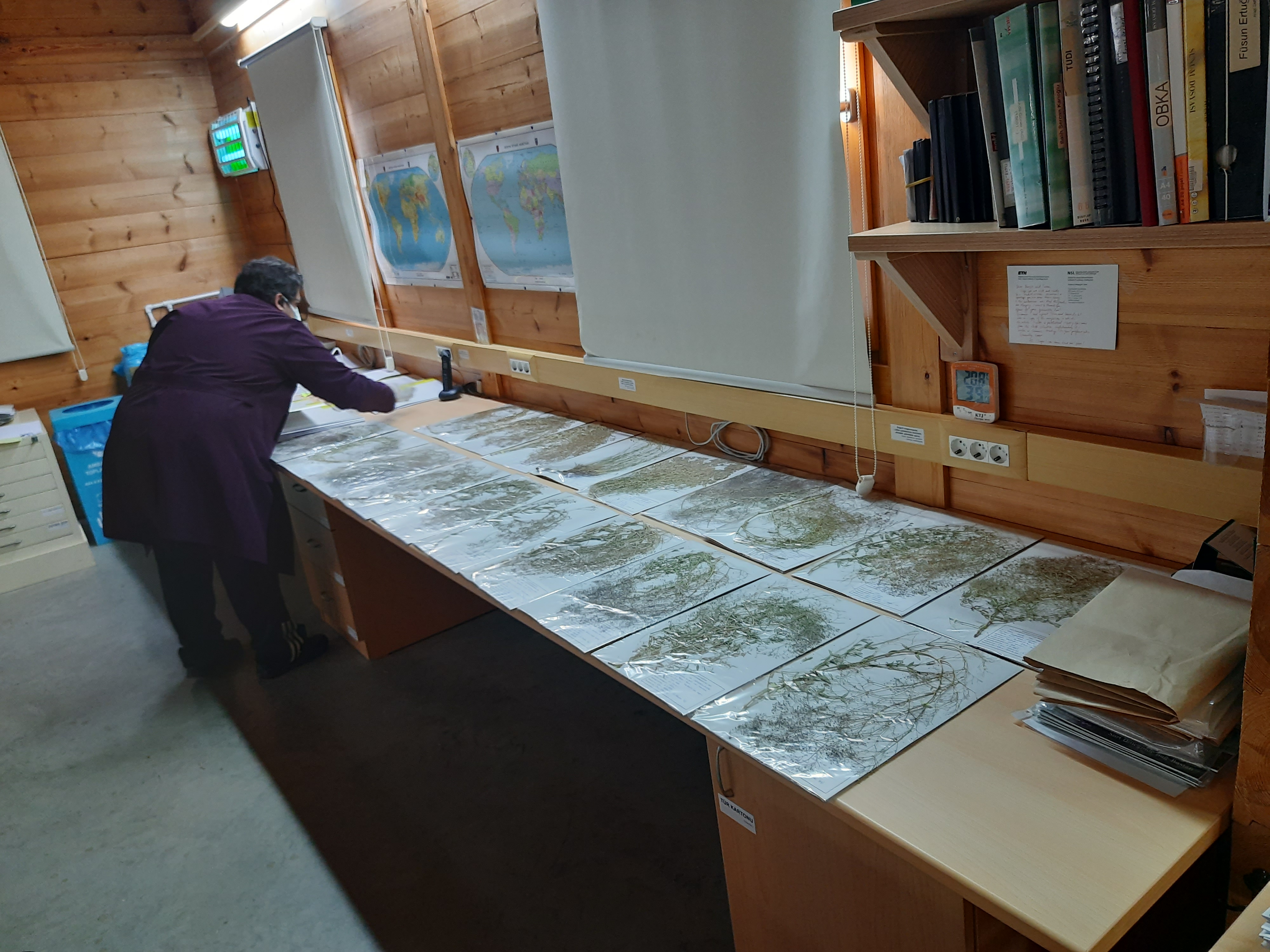 |
As NGBB Herbarium, we started to establish a virtual herbarium in 2020, within the scope of the Global Strategy for Plant Conservation (2011 – 2020) Objective I: “Plant diversity is well understood, documented and recognized”. As of 2022, our virtual herbarium has been put to service by transferring the data and images of the herbarium specimens in the NGBB Herbarium to the web environment.
History
Vision and Mission
Partnership Organisations
Science Department Staff

Burçin Çıngay
Head of Science Department and Herbarium Curator
E-mail:burcincingay@ngbb.org.tr

Ramazan Yalçınkaya
Assistant Head of Science Department
E-mail:ramazanyalcinkaya@ngbb.org.tr
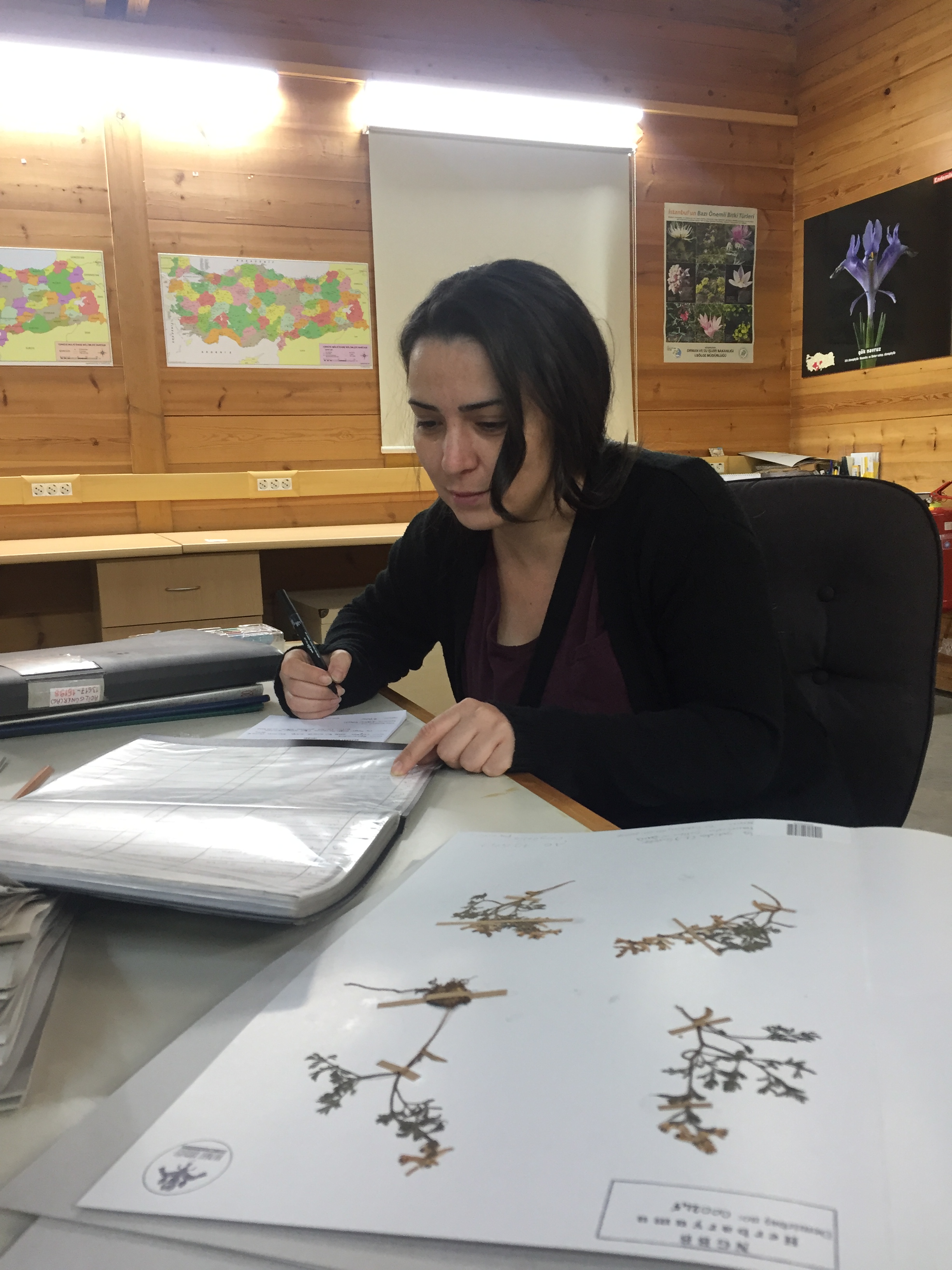
E. Betül Bilici
Assistant Herbarium Curator
E-mail:betulbilici@ngbb.org.tr

Mehtap Öztekin
Advisor
E-mail:oztekinmehtap@yahoo.com
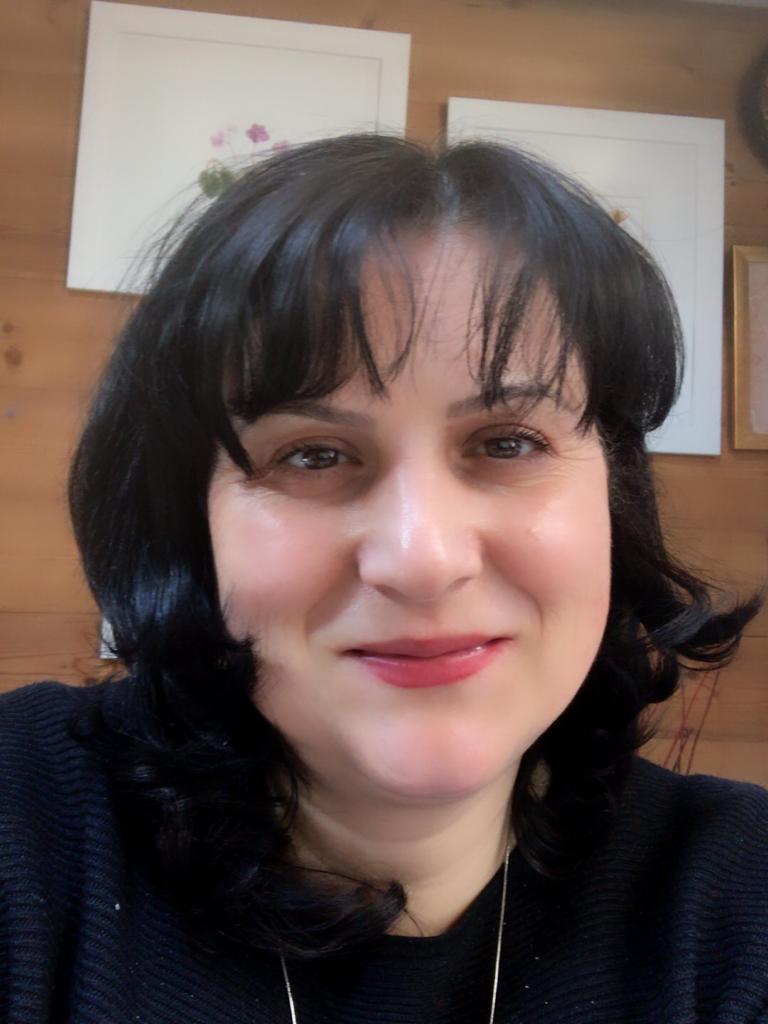
Ayşe Yazar
Head of NGBB Library
E-mail:ayseyazar@ngbb.org.tr
Ebru Varol Taşkın
Volunteer
Volunteering
Contact
|
|
|
Click here for directions. |
|






